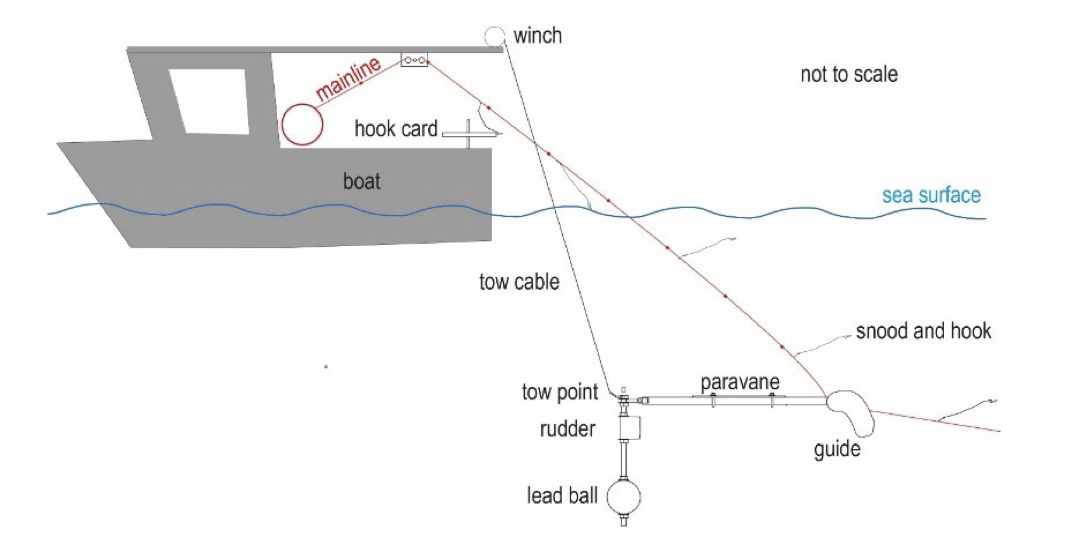 A diagram of the underwater setter from the report
A diagram of the underwater setter from the report
A report prepared by Vita Maris for New Zealand’s Department of Conservation on techniques to increase the sink rates of hooks in underwater line setting devices has been released by the Conservation Services Program.
The Summary as follows:
“The introduction of mitigation standards for demersal longliners and subsequent changes to regulations require a hook depth of five metres at the end of the tori line aerial extent, which likely requires substantial changes to gear configuration and setting speed for some of the fleet (Goad & Olsen, 2022). Underwater setting has the potential to increase sink rates and reduce risk to birds. It is particularly relevant to meeting the latest regulations, whilst maintaining flexibility of gear configuration for fishers. It also has the potential to meet the 10 m depth at the end of tori line mitigation standard.
The manual baiting demersal longline fleet in New Zealand clip on pre-baited hooks with short branchlines (or snoods, typically 0.6 m length) to a stoppered mainline relatively quickly (Goad et al., 2010). Therefore, in order to set demersal longlines underwater, both the hook and the mainline have to be deployed at depth and a downward force must be applied to the mainline in order to achieve sufficient depth. The underwater setter described in this report uses a guide towed behind the vessel at depth to force the mainline underwater.
Four trips were undertaken with the setter deployed for a portion of a set each trip. In total, 3,300 hooks were deployed through the setter. Squid bait was very robust and least susceptible to damage. Barracouta baits varied in quality with ‘flaky’ fillets susceptible to loosing bits of muscle tissue furthest from the hook. Pilchard baits were trialled on the first trip and due to high loss rates were not used on subsequent trips. At present the setter can deploy tougher baits at depth with reasonable retention rates at speeds up to approximately five knots with line tension set slightly higher than a free-wheeling drum. Weight spacing does not appear to affect setter performance however weights and weight-float combinations need to be heavy enough to sink in front of the setter rather than falling behind it. Adjustment of line tension and setter configuration (depth and distance behind the vessel) has the potential to reduce bait loss and damage.
Recommendations are to continue trials of the underwater setter during commercial fishing operations to collect catch rate comparison data. It is also recommended to continue developing the underwater setter design to minimise bait damage and loss for more fragile bait types.”
Reference:
Goad, D., Kiddle, B. 2023. Underwater line setter development. MIT2021-03a final report prepared by Vita Maris for Department of Conservation. 22 p.
09 October 2023

 Español
Español  English
English  Français
Français